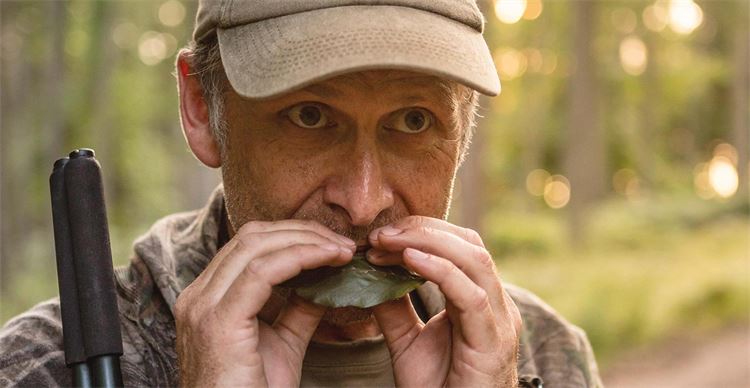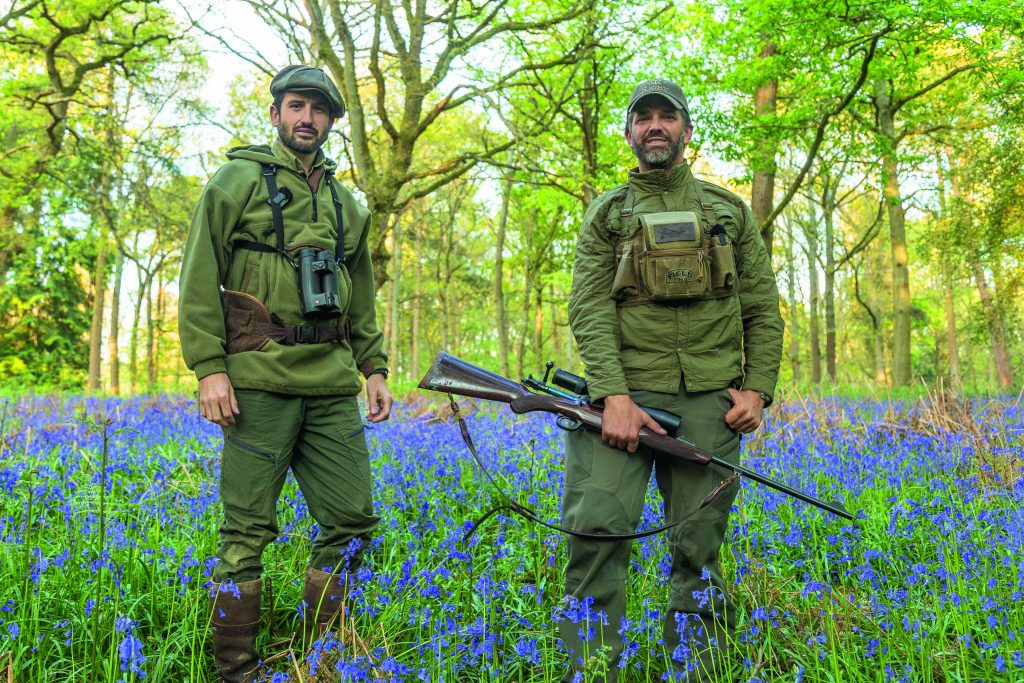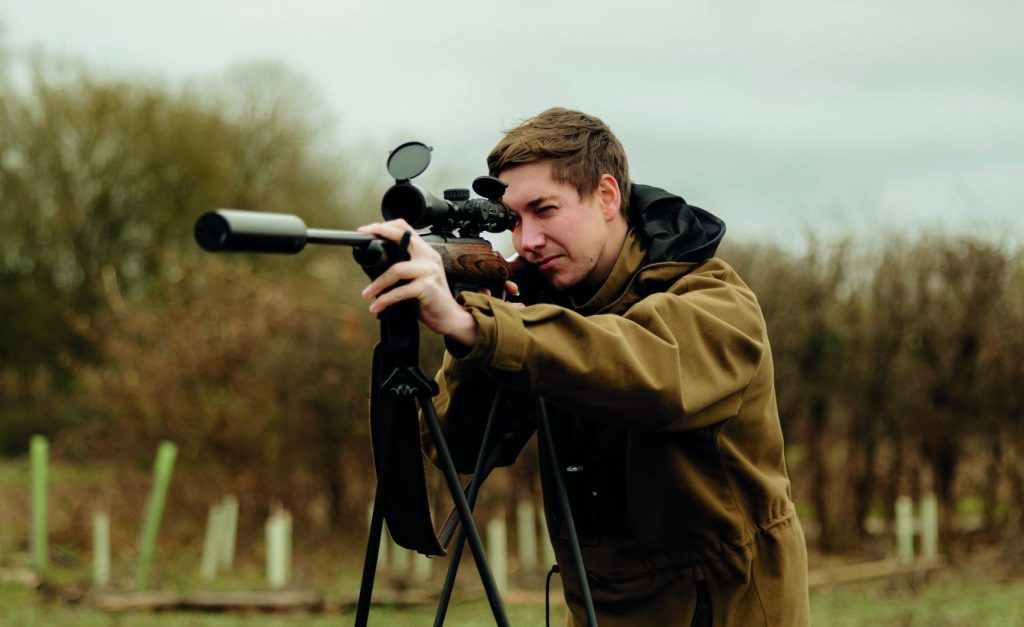Calling roe deer with a beech leaf
Forestry Commission wildlife ranger Glen Boxall has an extraordinary talent for calling roe deer. He explains how it works and shares some of his top tips for success.

Nicknamed the Pied Piper, Hampshire-based Glen Boxall is one of Britain’s foremost experts at calling roebucks during the rut. Generally speaking, he shuns plastic and wooden manmade deer calls in favour of a simple beech leaf, but he always carries a selection as back-up. Knowing when to call, how many times to ‘pheep’ and the exact pitch are essential if you’re to succeed.
So how did you first learn to call roe?
I started with the Forestry Commission 20 years ago when the chief ranger in post was Roger North. Roger, a very well-known and highly-respected figure in the deer world, took me under his wing and mentored me – but not straight away.
I had always known about roe calling but never really had a good understanding of it. I spent more and more time in the woods listening to roe to understand what I was trying to replicate with my many artificial calls. Every year, I asked Roger more and more questions and to come out with me during the rut. He had a reputation as an excellent caller so it was my ambition to call him a buck. It took four years of persuasion before Roger finally accepted my invitation by which stage I felt I had mastered the use of the artificial calls and had started to achieve reasonable results.
The first time Roger came out with me, we pulled up at the woods and he was straight out of the truck as I fumbled around getting my selection of calls ready. He walked over to a beech tree and picked a few leaves, I had no idea what he was doing. We reached a suitable calling location and Roger drew a leaf from his pocket, put it to his lips and gave the most organic and realistic sounding roe call I had ever heard. It put my pocket full of plastic calls to shame. I was enthralled; from this moment on I decided I had to learn how to call using a beech leaf.
It took me three or four years just to get a sound and then another year or two to learn how to manipulate the beech leaf to mimic the full tonal range of a roe deer and since then I have never had a bad rut. I keep my exact technique secret but it involves folding the leaf in two, stretching it between forefinger and thumb then blowing. The ‘pheep pheep’ of the beech leaf gives an organic tone like the reed of a woodwind instrument.
When is the most effective month to call roe?
In the UK the rut tends to happen towards the end of July to the first week in August, depending on the weather. The rut is an extraordinary period to call deer. By mimicking young and old, male and female, you can interact with a truly wild animal. It’s a very exciting time of the year.
What sort of weather will bring on the rut?
Extreme mugginess is what we are after.
Which sex and age do you mimic when you are calling?
I tend to start with a call that mimics the sound of a mature doe, then to an old doe and finishing with the young doe. However, I would never use the sound of a kid – I feel there is an ethical problem using a kid’s call. It may produce results, as it brings in the does, and the bucks follow, but it stresses the does, and you’re not really calling the buck.
What’s the best time of the day to call?
In August I always wait until the temperature starts to warm up at around 7:30am and normally finish around 10:30am. If you call before that time, the deer are likely to be couched-up listening as they will know most of the does in their area and all you are doing is educating them.
What sort of beech leaf makes the ideal call?
The leaves are only right for calling for a short period of time – luckily it coincides with the rut. As a result, while I was learning, I had to go through three seasons worth of leaves before I got really good. It is essential that the waxiness, moisture content and thickness of the leaves are perfect in order to get an exact tone.
Why is it best to call deer in pairs?
One of the dilemmas that you have if you are calling by yourself is that the bucks will come straight in to the call, which means that you often don’t get a good broadside shot. However, if done in pairs – one person calling and one person shooting – you can position yourself at an angle so that a broadside shot is presented.
Do you ever use artificial calls?
I have a collection of artificial calls from all over Europe, which totals more than 60. When I buy a new call, even a Buttolo, I take them all apart and tweak them so that the pitch is more natural. The problem with the beech leaf is that I have to use both hands, which can make shooting impossible if a buck comes running. This is why I still use other calls so I can operate them in my mouth leaving my hands free to shoot. Given the choice, I would only ever use a beech leaf.
How can we see you calling roe deer first-hand?
It is possible to stalk with me under the Forestry Commission’s permit stalking scheme. However, opportunities are much more limited today due to effective crop protection within our woods, but some local stalking packages still exist. My principle aim is to protect the forestry crop, so cultivating good trophies is not on the agenda. It’s my role to carefully and selectively manage the forest’s deer numbers within my beat. This allows us to maintain a healthy population at a level that does not impact detrimentally on the unique plants of the area, or the health and regeneration of our woodlands. Even so, within the beats, we cover some of the most productive regions for roe heads in the country and are internationally renowned for trophy quality.
Related Articles
Get the latest news delivered direct to your door
Subscribe to Fieldsports Journal
Elevate your experience in the field with a subscription to Fieldsports Journal, the premium publication for passionate country sports enthusiasts. This bi-monthly journal delivers unparalleled coverage of game shooting, fishing and big game across the UK and beyond.
Each issue offers a stunning collection of in-depth features, expert opinions and world-class photography, all presented in a timeless yet contemporary design.
Save 10% on shop price when you subscribe, with a choice of packages that work for you. Choose from Print & Digital or Digital only with each journal delivered directly to your door or via the app every other month, plus access to past issues with the digital back issue library.








